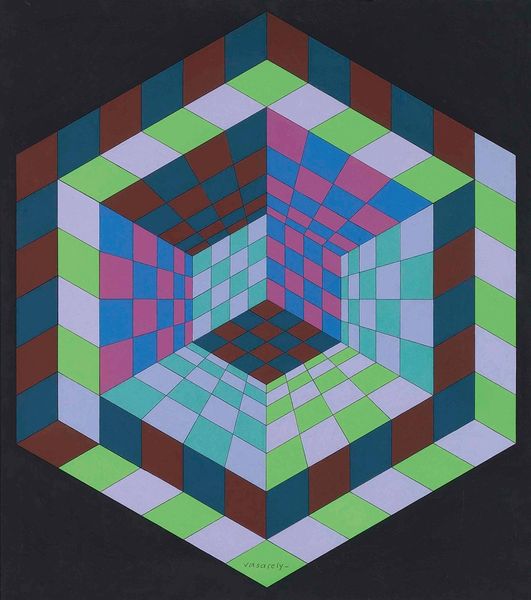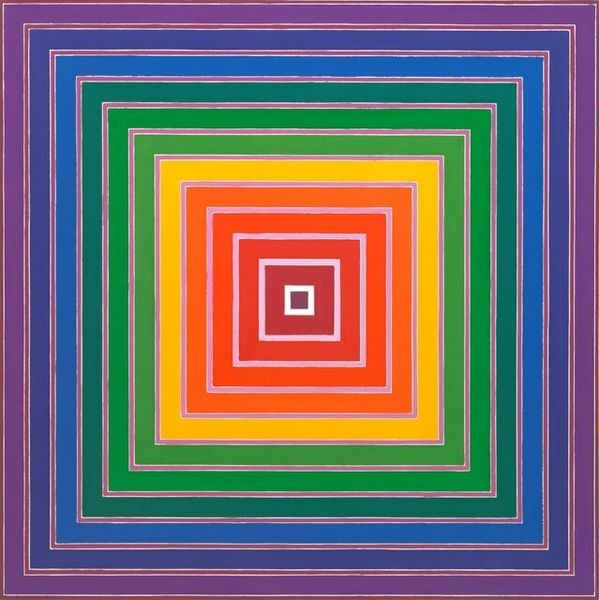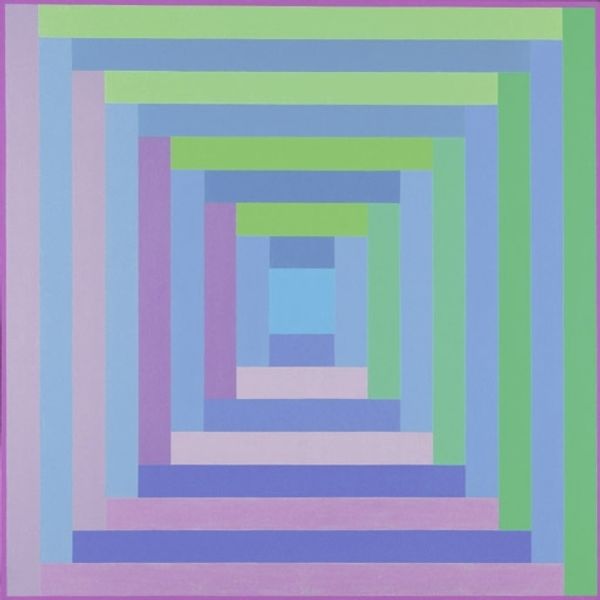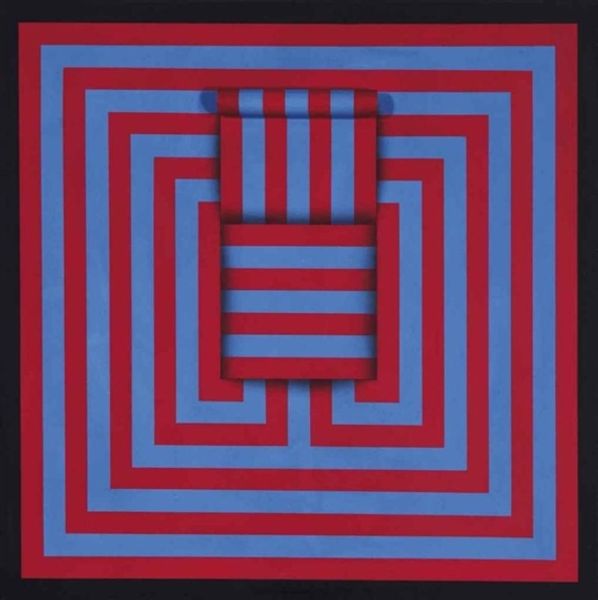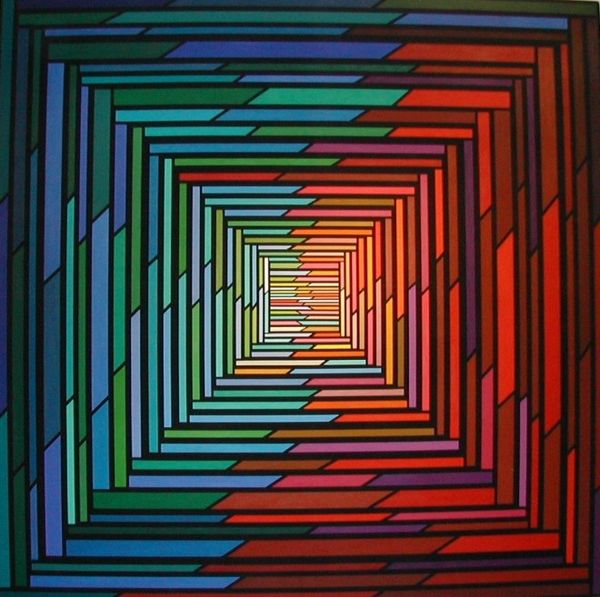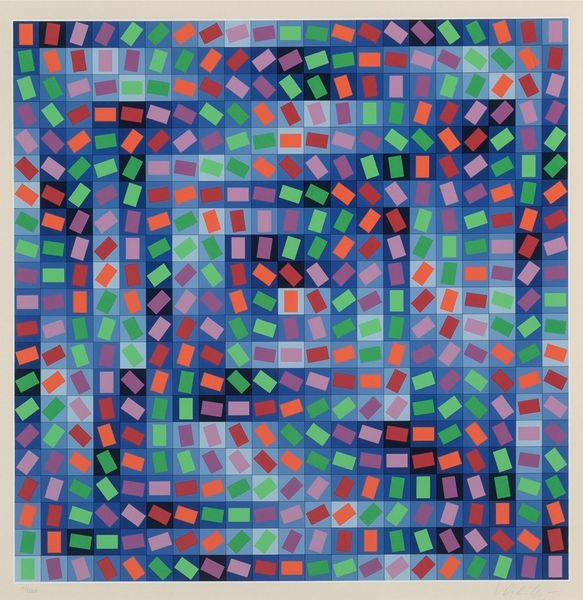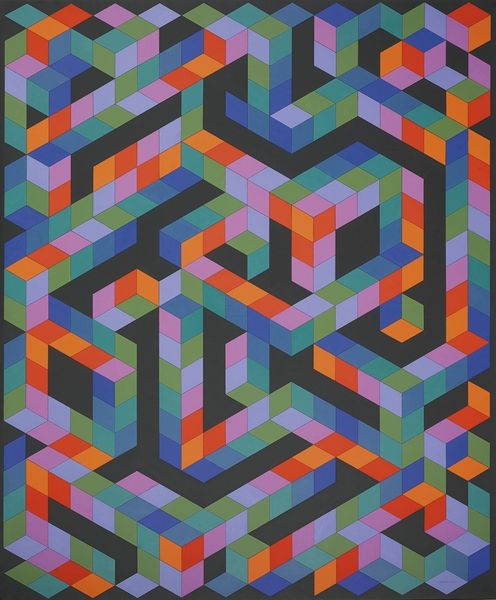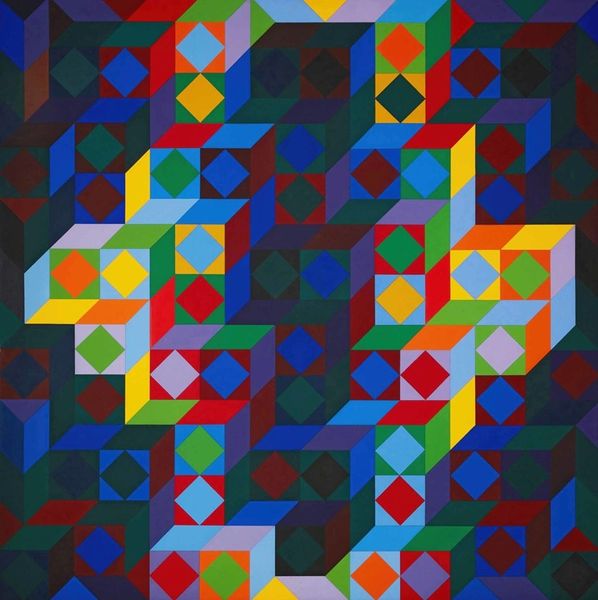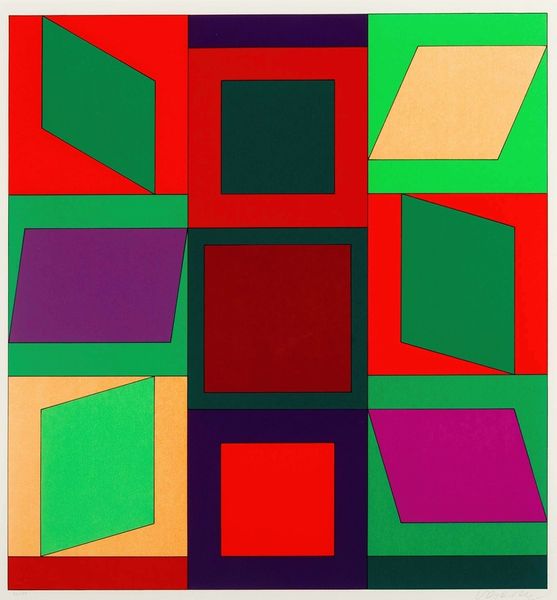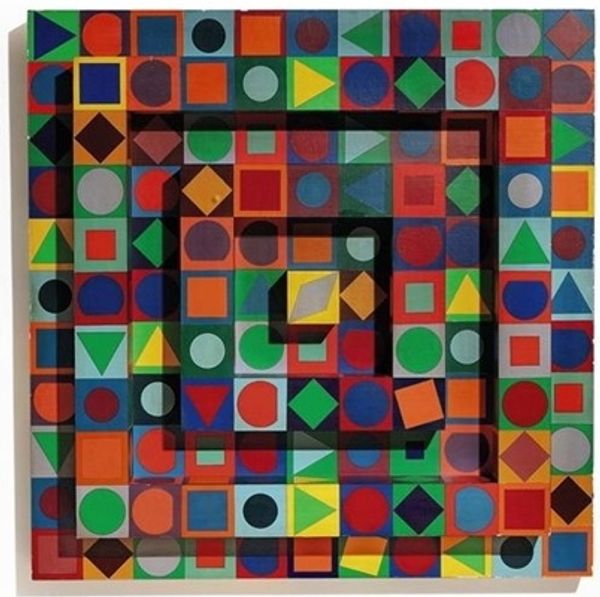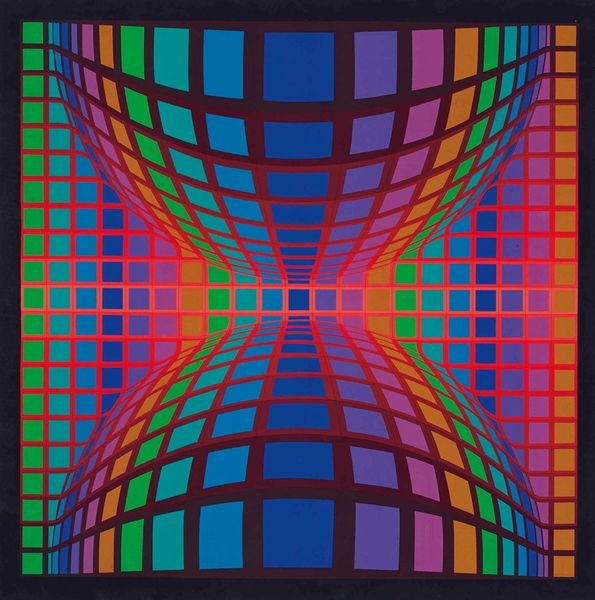
#
natural stone pattern
#
geometric pattern
#
subtle pattern
#
abstract pattern
#
rectangle
#
minimal pattern
#
organic pattern
#
vertical pattern
#
line
#
pattern repetition
#
layered pattern
#
funky pattern
Copyright: Piero Dorazio,Fair Use
Curator: Here we have Piero Dorazio's "Myrina," created in 1995. What strikes you about it? Editor: It’s like looking into a colorful tunnel, an endless geometric regression towards some brightly lit center. The use of the dark background emphasizes this sensation. Curator: Dorazio, throughout his career, focused intensely on the properties and possibilities of color and line. His artistic process was meticulously planned, employing a method he likened to weaving. It is also evocative of printmaking in its geometric precision. Editor: That's fascinating! Seeing the rigid lines I thought the opposite, that a machine created it. This really raises questions about what we consider "fine art" versus something crafted. Was Dorazio deliberately challenging those boundaries? Curator: He certainly pushed them. The socio-political context of abstraction at that time positioned non-representational art as potentially democratic. Available and interpretable regardless of social position. Dorazio even had a prominent presence at the Venice Biennale. How do you see it engaging the public? Editor: Its bold palette immediately grabs attention and those receding lines certainly provoke an emotional response. I find it almost hypnotic; It could easily captivate an audience from many different backgrounds, which I agree, may well challenge class hierarchies associated with more traditional or "figurative" art styles. Curator: And it does all that through very deliberate construction. We might even ask ourselves to what degree does the precise technique negate a reading about public or mass art considering the degree of difficulty. Editor: Fair point. Ultimately the painting is the evidence, and no amount of socio-political discussion or intellectual rationalization negates that this canvas provides quite the unique viewing experience.
Comments
No comments
Be the first to comment and join the conversation on the ultimate creative platform.
